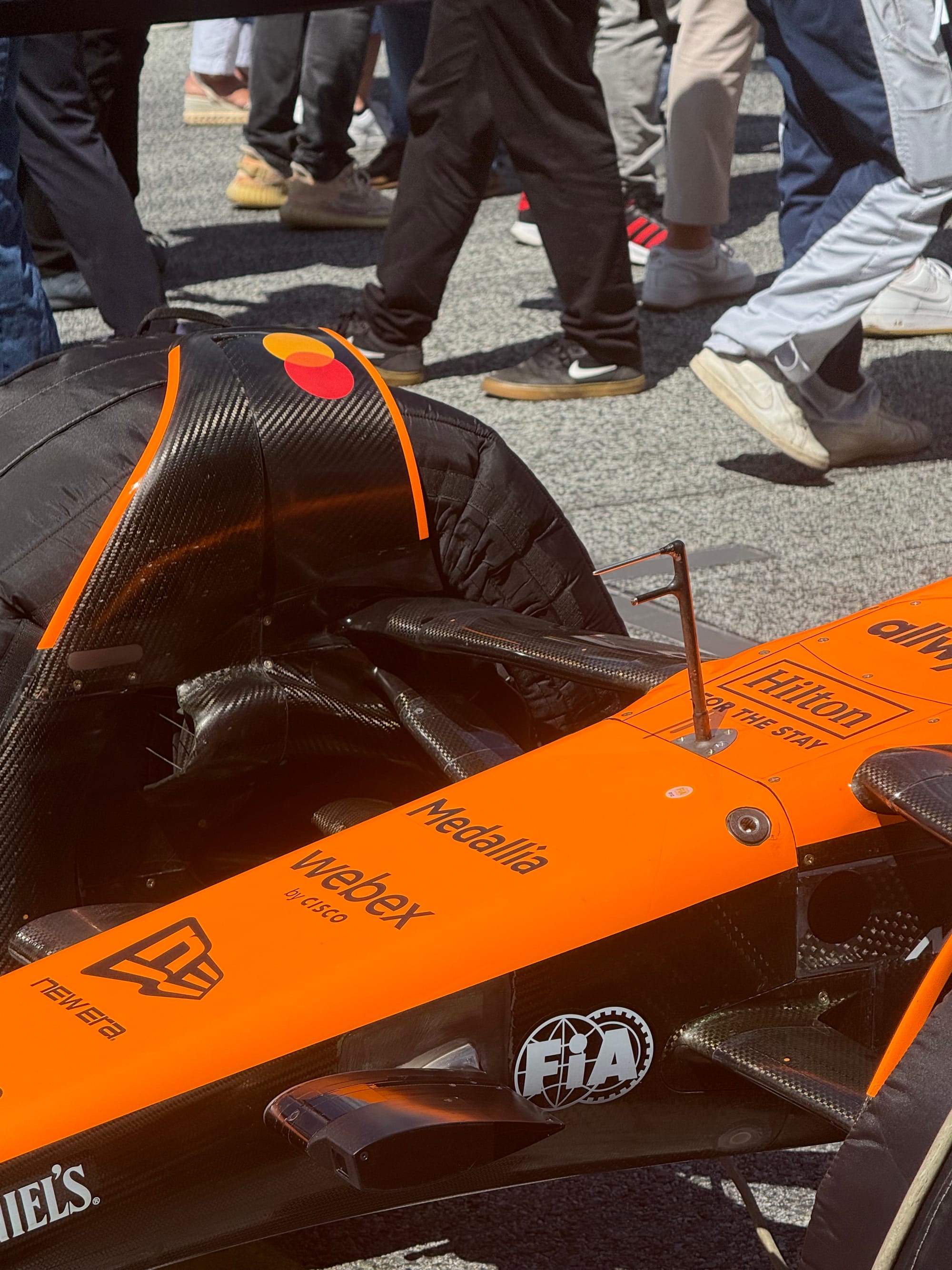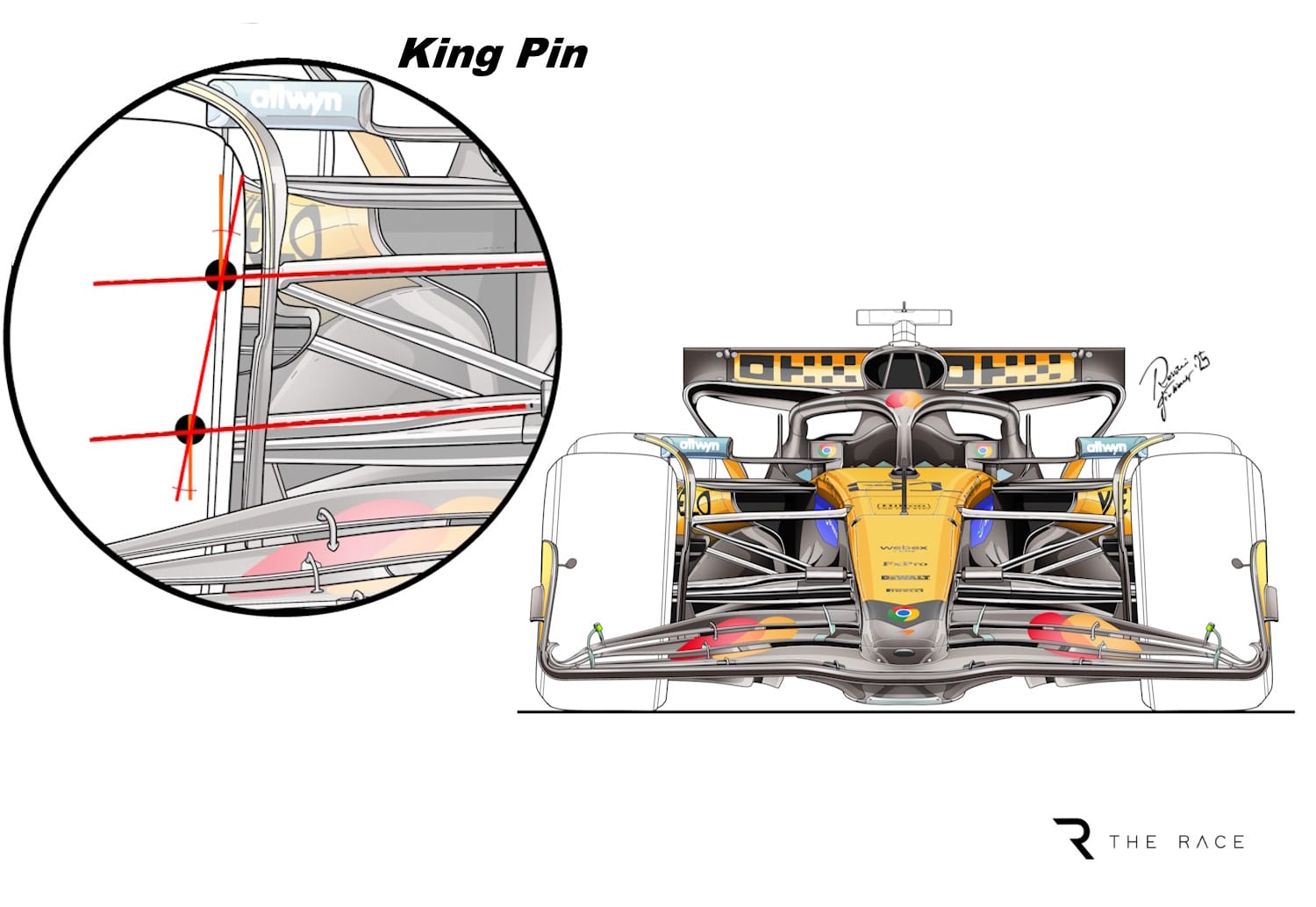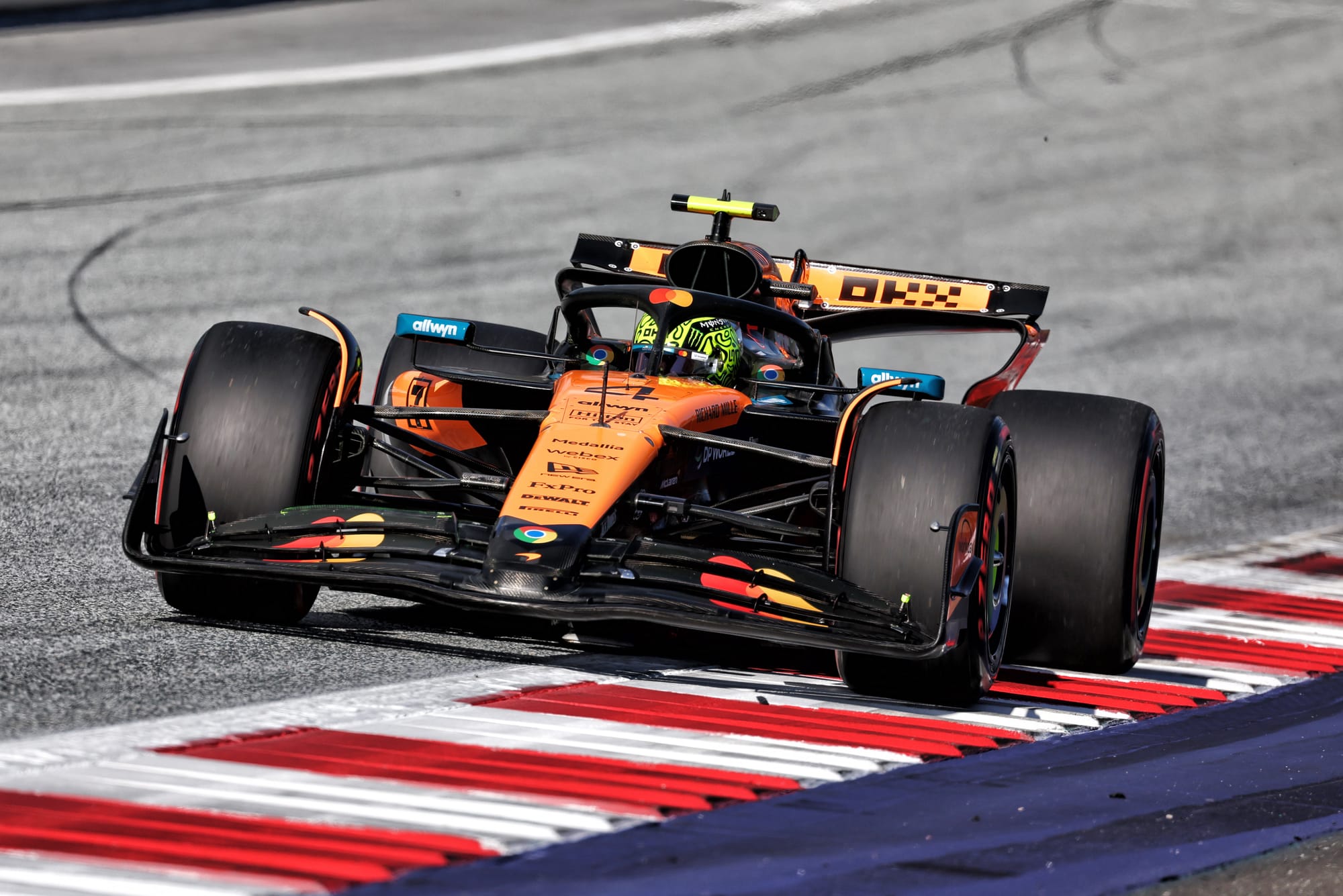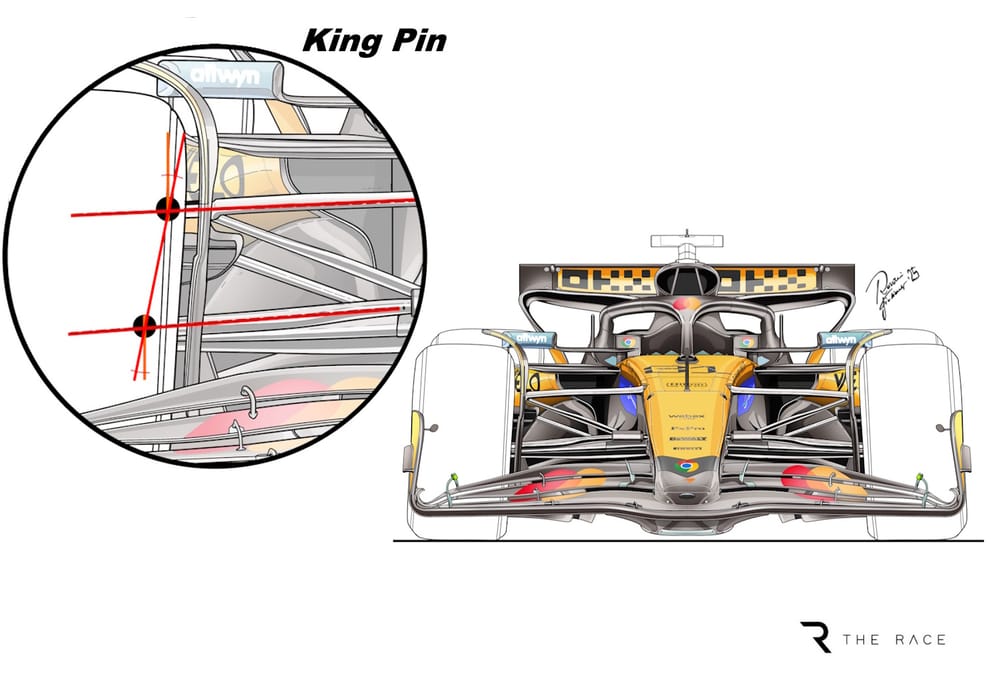If you look from the outside, the modified McLaren front suspension that Lando Norris has been using since last month’s Canadian Grand Prix appears to be almost identical to the version he started the 2025 Formula 1 season with.
Only close-up examination of the upper wishbone elements shows any evidence of changes at all – with the outer area of the leg looking slightly more beefed up than before.

That the tweaks are so hard to spot points us towards the real work being hidden away inside the wheel assembly – in that intersection between the suspension and the upright.
Any modifications here are also unlikely to be obvious to the eye, because we are talking about a game of millimetres in adjusting the angles at play.

What exactly McLaren has done has not been explained in detail, but there is a suggestion it relates to an adjustment of the angle of the steering’s kingpin inclination (KPI).
Adjusting this - which alters the angle against vertical by which the wheel swivels around - is clearly aimed to offer greater feedback to Norris about what the car, and more especially the tyre grip is doing when cornering.
The KPI works in conjunction with the castor to generate increased or decreased camber with steering angle.
Its angle, plus its lateral position, also generates an offset to the actual tyre contact patch which, because of the static camber, is not simply the centre of the tyre tread.
In basic terms, these combined changes enhance the self-centring effect that a wheel has in a straight line – and therefore will help a driver feel more connected with what is happening to their car while turning.
It’s really the castor that gives the self-centring feeling. More castor means heavier steering but more feeling, less castor lighter steering and reduced feeling.
Previously, without this self-centring feel, the McLaren has famously produced a “numbness” that Norris in particular has not been happy with.
An improvement in driver feel is not only useful through cornering, but also in that phase of a corner where a driver is heavy on the brakes and is reliant on knowing where the level of grip is to avoid locking up.
This is something Norris in particular had struggled with early on this year.
McLaren team boss Andrea Stella said: “We want to be able to give our drivers more feeling of what's happening in braking. Like when the front tyres are close to locking, because that's where you want to operate your car in braking, close to locking of the tyres.
“Normally drivers use cueing that comes from different sources. The steering is one of those sources.
“So we wanted to improve the feeling for the drivers through the suspension but not the brake system itself. Just such that they could understand better what's happening in braking.”

The changes have proved so important because they have helped wipe away a front end sensitivity problem that Norris had in the final 5% of grip.
This was something that only really became exposed in those final all-out push laps like in Q3 – where Oscar Piastri had proved to be stronger in the earlier part of the campaign.
Battling against the physics of his car, Norris’s lack of confidence in knowing what his MCL39 was doing became apparent – whereas now things may be very different.
The changes are not without some compromise, however – and that may well have come from the tweaks reducing some of the benefits of the anti-dive front suspension that McLaren introduced this season.
This will have implications for the overall aero platform, which will not be as consistently flat as before and may need to run slightly higher at the front.
This is why McLaren opted against introducing this change until it was sure that any downside of theoretical performance was not going to impact its results on track.
McLaren’s technical director of engineering Neil Houldey explained: “They [the changes] had some small negatives that we didn't necessarily want to introduce at the start of the year.
“But running earlier on in the season gave us confidence that actually that wasn't going to be a problem and so we were able to introduce this change without any real concern that it wouldn't be any worse and should be better.”
Norris is the only race driver to have run this specific suspension tweak so far, as Piastri has been comfortable in sticking with the configuration McLaren has raced with since the start of the season.
As Piastri explained in Austria, the changes McLaren has made are not in his mind significant.
“I'm not using the bits that came in in Canada because they're not an upgrade,” he said. “They're just different. All the parts that we think make the car faster are on both cars.”
But one interesting question is: if he had been using that revised suspension, would he have been able to judge the braking better at Turn 4 in Austria where he locked up in his battle with Norris?
Further changes
It is not just the steering tweak that McLaren has been working on though, because the team has pushed hard on other suspension changes in recent races.
In Austria, there were revised fairings on the front suspension which were aimed at optimising the airflow from a new front wing that had been evaluated in Canada.
As Stella said: “This was all part of a front-end system upgrade. Front wing, front brake, front suspension. There's also some modifications to the chassis, and this has allowed us to deliver more aerodynamic efficiency to the car, so this is more grip for a given level of drag."
At the back of the car, McLaren made some geometry changes which it hoped would add a bit more stability to the rear – especially on corner entry. These are covered in more detail by Gary Anderson below.
Houldey added: “It's just an area of development that, when aerodynamics become very difficult to gain performance from, we've been involved with and are continuing to evolve and put performance on the car.”
Gary Anderson's verdict
For Austria, McLaren tested and raced some front and rear suspension geometry changes.
In both cases it is very difficult to see in detail what it has done, but taking a stab from what I have seen of the rear, it looks like it has reduced the rear anti-lift to allow the car to rise slightly more under braking.
In both pictures below, the blue line is the top wishbone forward leg. The red circle is where I estimate the inner pickup for this leg to be, while the green line is the lower wishbone inboard pickups.
The white double arrows line is the height distance of the front wishbone inner pickup to where the pushrod goes through the bodywork.
On the new set-up, the white double arrows line looks shorter. This is a consequence of the inner pickup being higher, also relative to the lower wishbone pickups, which are defined by the driveshaft inner joint position, so more or less fixed it also looks higher.
The changes will allow the rear of the car to rise up slightly more under braking. As long as McLaren doesn’t lose too much rear downforce then it should give both its drivers a little more feel on the brakes.
As has been talked about above, the changes to the front suspension are even more difficult to see, but more likely involve how the pivot axes interact with each other around the tyre contact patch, especially when applying steering lock.
There are a whole combination of considerations to take into account here.
These include the KPI pivot axis, and the offset of its intersection with the tyre contact patch, combined with the plus or minus of the trail offset (which is how far forward or rearward the axle centre line is relative to the KPI pivot axis).
You also need to consider that the castor angle and its offset to the tyre contact patch.
All of this combined will change the feeling of the steering as the driver applies steering lock.
To the driver, the steering feel is everything. If, for whatever reason, the steering gets lighter as they apply lock, the driver will instinctively think the car is going to understeer and apply extra steering angle.
This can then make the car snappy. If the steering gets heavier, they will think the car is going to oversteer and not commit to the corner as aggressively.



